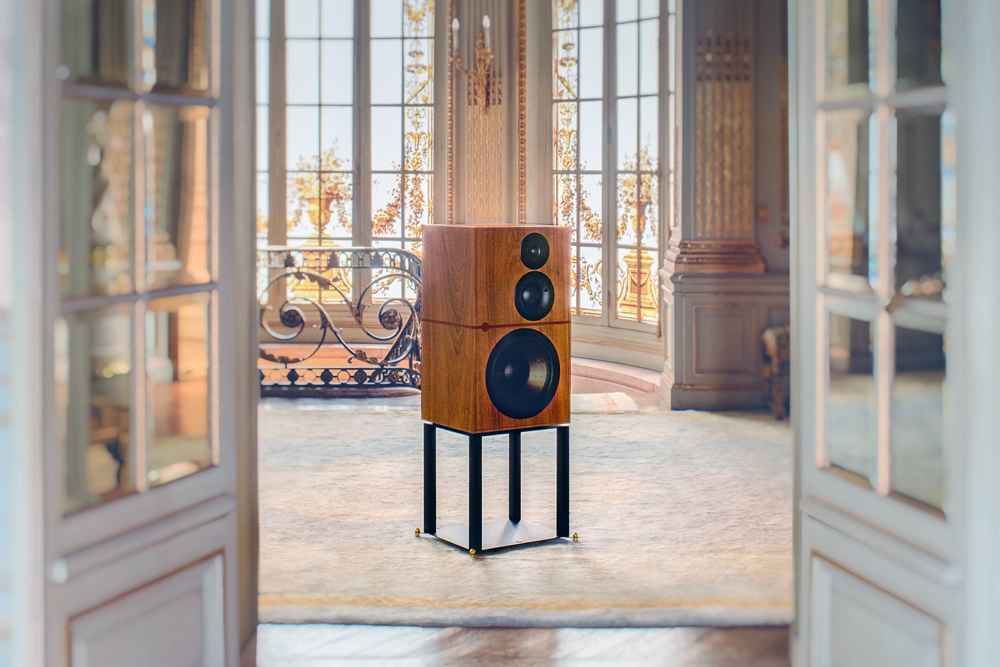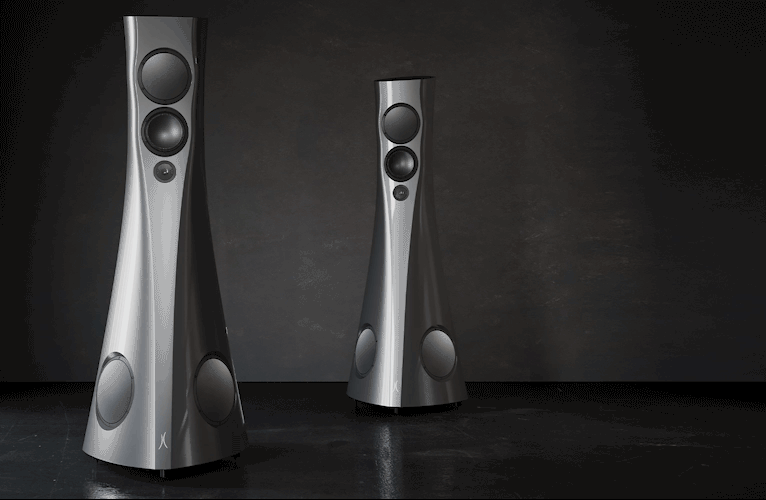The French have a saying, “pièce de résistance”. It is a term I am quite familiar with from my culinary background and in its origin means, “the chief dish of a meal”, or “the most noteworthy item of a group.” Since 1789, this French phrase has been used in English and in modern times can refer to anything as being “an outstanding item”, “a masterpiece” or “a memorable moment in one’s career”. It’s not a term I use lightly. Even in the culinary world I would rarely do so but, as I discovered during my time listening and evaluating Revival Audio’s Atalante 5 speakers and reflecting over all my notes, “pièce de résistance” is the ideal phrase that comes to mind. Even the drivers developed for the Atalante models could be deemed the most noteworthy among their peers and an outstanding achievement in this audio veteran’s long career. Could the Atalante 5 speakers be worthy of 3 Michelin Stars?
The Revival Begins
Revival Audio is a new speaker brand from Alsace, France. You could be forgiven for thinking the above accolades as prematurely bestowed upon a speaker maker just entering the market. Yet, Revival Audio are no simple start up. The company’s sole two speakers (at this stage) are the fruit of decades of combined expertise from ex-Dynaudio’s Daniel Emonts and Jacky Lee, Revival Audio’s founding members.
While Emonts was Senior R&D Engineer and Lee was Chief Commercial Officer at Dynaudio, they became great friends and together took the plunge in establishing Revival Audio by the end of 2021, with the ambition of crafting some of the best speakers in the world. Together they make a formidable team and are well paired to take on the industry heavy weights.
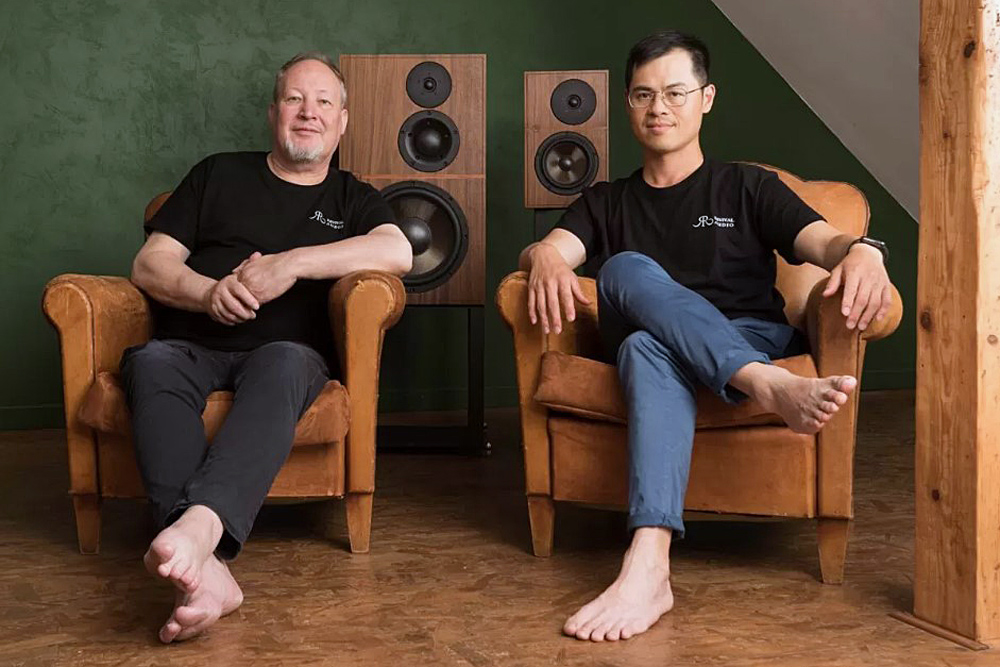
Jacky Lee, co-founder and CEO of the company, is a Swiss-based Taiwanese national and accomplished strategist and commercial executive in $50M+ businesses. He has successful track records in the consumer electronics and management consulting fields, with a number of successes when at the Danish speaker brand. He went from management trainee to senior strategy consultant at IBM in just three years while achieving career milestones and winning many awards while also earning a BSc in management in 2006 and an MBA in 2010.
Daniel Emonts is the company’s co-founder, CTO and design engineer. He brings a huge repertoire of knowledge and experience spanning almost four decades in the audio industry, with acoustics being his metier. Showing an interest in audio from a youthful age, Emonts has forged a remarkable career at many top brands including Dynaudio, Focal-JM Lab and Sound Matrix Corp. He’s also had R&D engineer roles at Philips Sound Solutions and Altec Lansing, plus many other technical, design and consulting roles.
So how does a new Hi-Fi brand stand-out and penetrate an already saturated market from other new, well established and prominent brands? Well, as Revival Audio has shown, you create your own exclusive formulas utilising passion, next level innovation and expertise in R&D. You may also source new ingredients to improve on traditional ideas and eliminate the problems and limitations in driver designs by applying better methodologies. The “Buying nothing off the shelf” approach by Revival Audio means there are no compromises being made by the boundaries of pre-made products and allows the company to introduce its own unique technologies, remaining completely objective in the engineering and build procedures to achieve the best sound possible. And this entire process from design to assembly is proudly kept in-house by Emonts and his talented team of engineers at the company’s laboratories in France. The only out-sourced exception is the collaboration with Parisian award-winning A+A Cooren Design Studio on the speaker’s aesthetic design.
To begin with, Revival Audio has released two models – the Atalante 3 bookshelf speaker and the Atalante 5 standmount speaker, with each having their own customised stands which are provided by the company as an optional extra. The Atalante 5 (A5) is the model under review here.
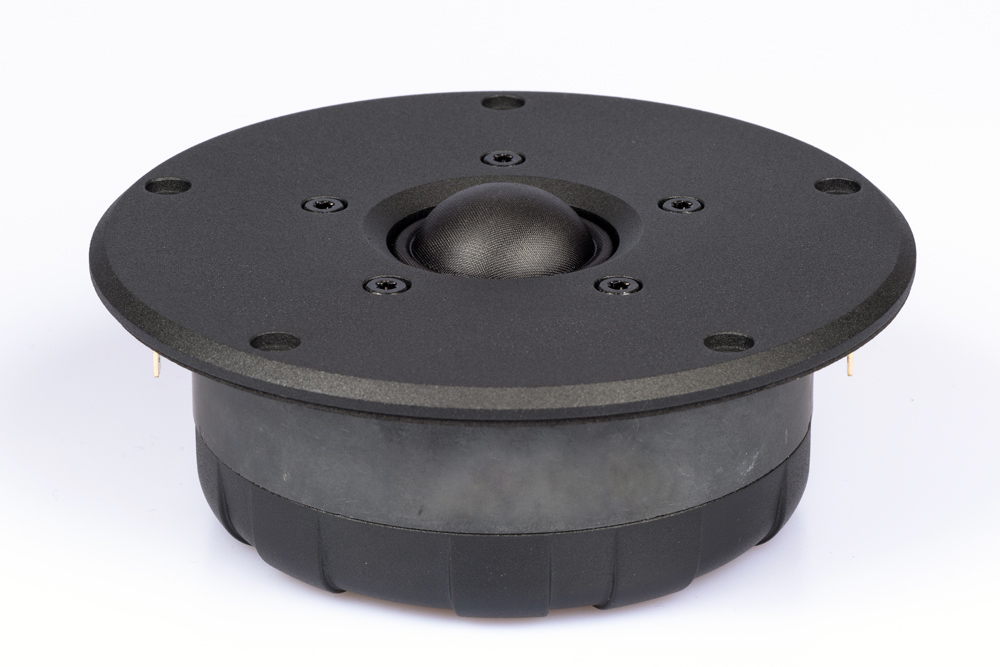
Loving the characteristics of soft-dome drivers for their smooth, accurate and fatigue free sound, Daniel pushes the standard to an extraordinary level by combining unique and patented technologies to the range. There’s much to explain so bear with me.
The 28 mm soft-dome tweeter is equipped with an asymmetric dome suspension which provides a more linear guiding of the dome, while the custom shape of the suspension helps to achieve better dispersion as waves travel freely to the sides. Developed through hundreds of hours of experimentation, the RASC (Revival Audio Special Coating) recipe is then applied for perfect breakup control, producing the most accurate and smooth sound.
With space behind the dome causing standing waves, Emonts designed the patented technology ARID+ (Anti Reflection Inner Dome) to be mounted close to the acoustic dome to avoid any resonances and to guide sound waves into the BCD (Back Chamber Damping) where they are properly absorbed. The benefit here is there’s no damping behind the dome itself, delivering an extended frequency response and together with the BCD, achieving a low resonance frequency of 560 Hz.
Interestingly, extra-large ferrite magnets (100 mm) are used. They offer a high magnet force like smaller neodymium magnets but at a significantly lower cost and are more eco-friendly. The larger mass of ferrite absorbs heat from the voice coil and helps for better cooling. A comfortable sensitivity of 91 dB is reached with this system.
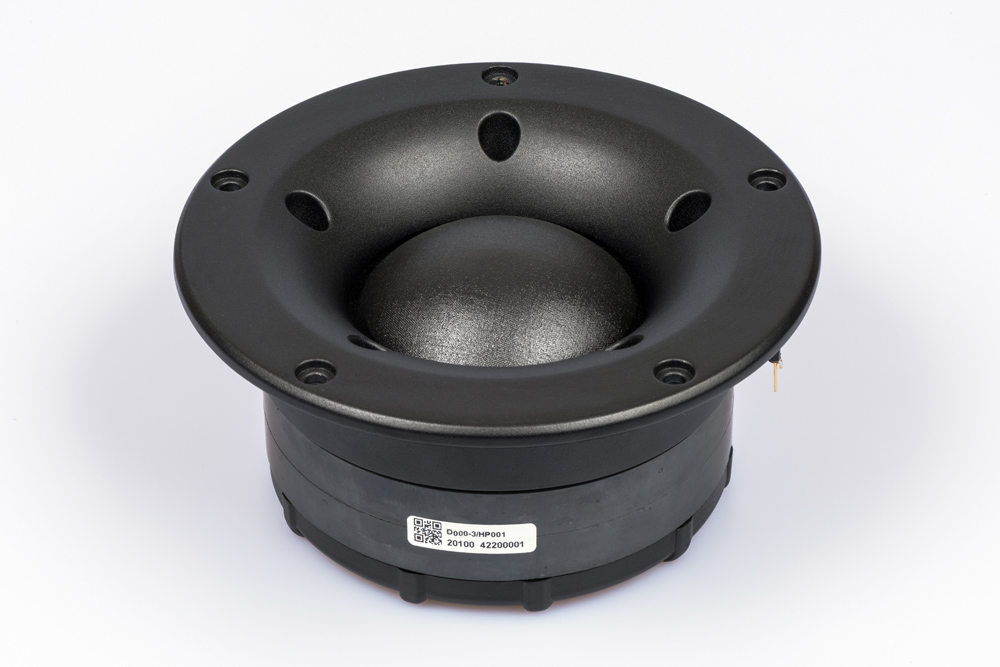
The 75 mm soft dome mid-range driver is designed with the aim of achieving ‘tonal balance’. Using matching technologies to the tweeter, it is equipped with an inversed dome suspension, the RASC recipe, the ARID+ with the BCD and a ferrite magnet, now upsized to 140 mm, offering the same benefits but within the midrange band. The midrange driver works like a piston between 400 Hz and 5 kHz with no breakup modes and, as higher frequencies are reproduced, the less the dome itself emits sound. Together with the tweeter, they make the ideal siblings.
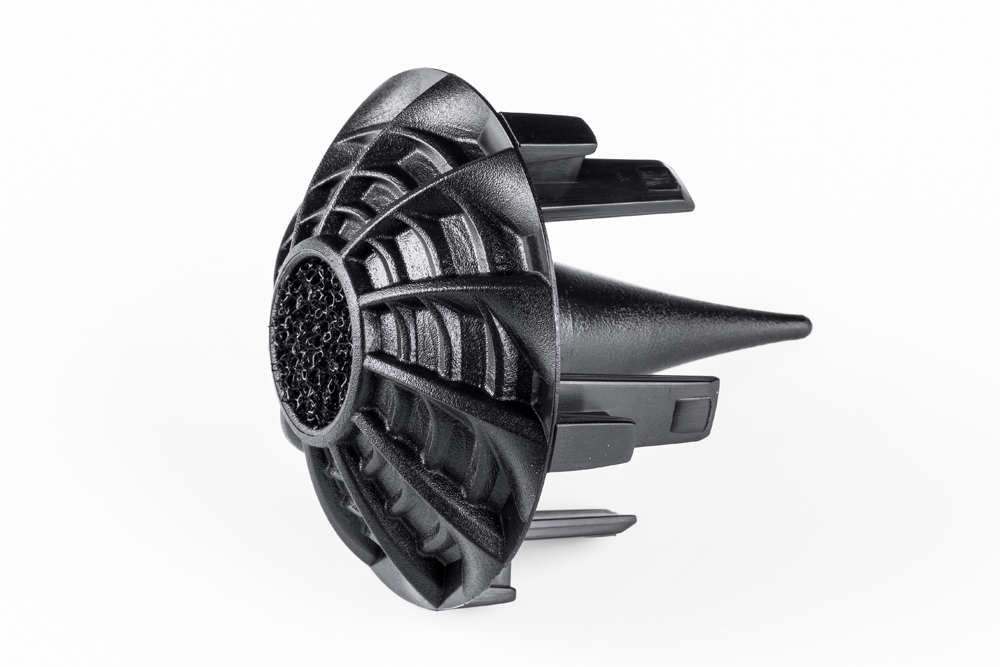
The innovation continues with the 12 inch woofer which comprises the first ever BSC (Basalt Sandwich Construction), a unique Revival Audio technology. Basalt is extracted from lava stone and transformed into fibres which are then impregnated into the cone’s fabric, making it much stronger than Kevlar and providing the perfect balance between rigidity and lightweight. To achieve the right damping within the membrane, the cone is built as a sandwich with the top layer consisting of the basalt fibre fabric, followed by a polymer glue with felt in the middle and a customised foam-based cone as the bottom layer. This construction produces fast and smooth responses with tight bass dynamics which are further enhanced via an extra-large ferrite magnet and an asymmetric open ventilated basket.
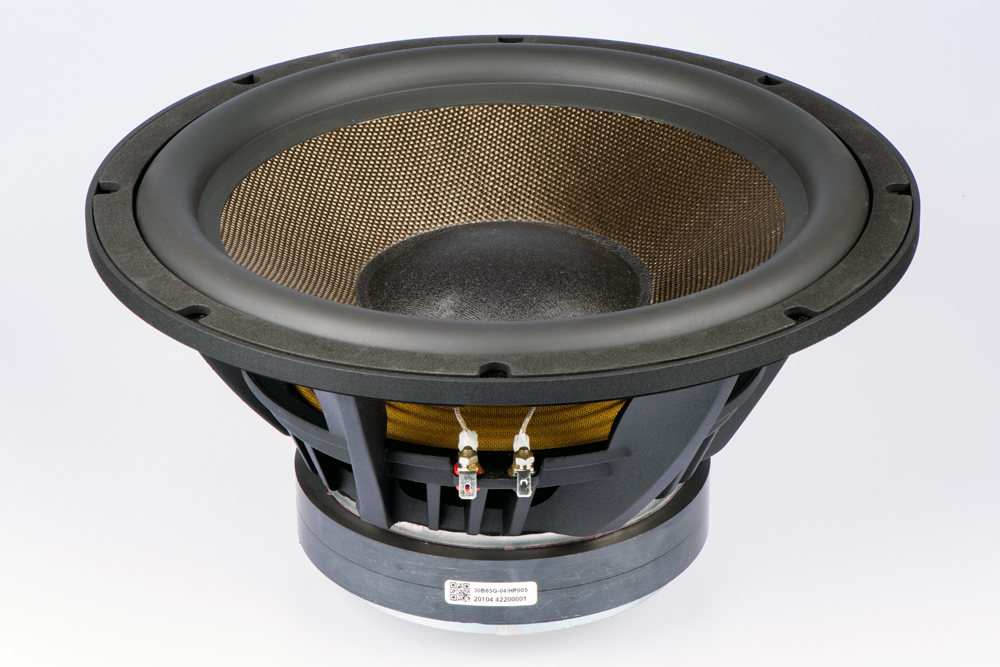
As for the crossovers, Revival Audio’s philosophy on crossover design is, “we don’t have a philosophy”. Using a single board crossover of minimalist design, “we use few components as possible, but all that is needed”. The crossovers offer minimal delay, are tuned by hand and are built to last.
Revival Audio class the Atalante 5 speaker as a reflex loaded 3-way standmount, which has a frequency response from 28 Hz to 22 kHz +/-3 dB with the crossover frequencies at 450 Hz and 3.5 kHz. A nominal impedance of 4 ohms (3.2 ohms minimum at 110 Hz) and having an 89 dB sensitivity (2.83 v/1 m) makes the A5 suitable for amplifiers capable of 30 watts minimum to 200 watts maximum.
Mise en Place
Slipping off the Revival Audio-branded cloth covers revealed a solid looking, 33 kg speaker in a walnut veneer styled with reminiscences of a past era in Hi-Fi. Some might say the ‘golden age’ in audio. There’s a laser etching of the company’s logo along a printed rose hue ribbon that wraps around the speaker midway, adding a nice touch without being too bold or distracting. The rear has two port holes sitting across from each other and just above the printed ribbon with supplied foam port bungs. There is also a single set of speaker terminals.
Over time, the look did grow on me, for this modernist, and although the veneer does offer some nice contrasting textures in the timber, I am no fan of walnut. It would be good to have the option of different veneer finishes in future. I also found the two-piece grey-coloured speaker grilles to be a bit of a mismatch with the speakers but, as the grilles simply snap onto the cabinets using hidden magnets, these are easily removable leaving an unblemished baffle panel surface.
The baffle has clean straight edges, with the tweeter and midrange drivers being in an off-set alignment to the woofer. Revival Audio suggests outward facing tweeter drivers when the speakers are placed less than 2.5 to 3 metres apart and inward facing when further apart, providing a suitable soundstage based on room size. As my room is only 3.4 m wide, I placed the speakers with the tweeter drivers facing outwards at 2.3 m apart. Placed 1.2 m from the back wall and 3.2 m to my listening chair in a 6.7 m long room and settling with only 20 degrees toe-in, proved to be the best position.
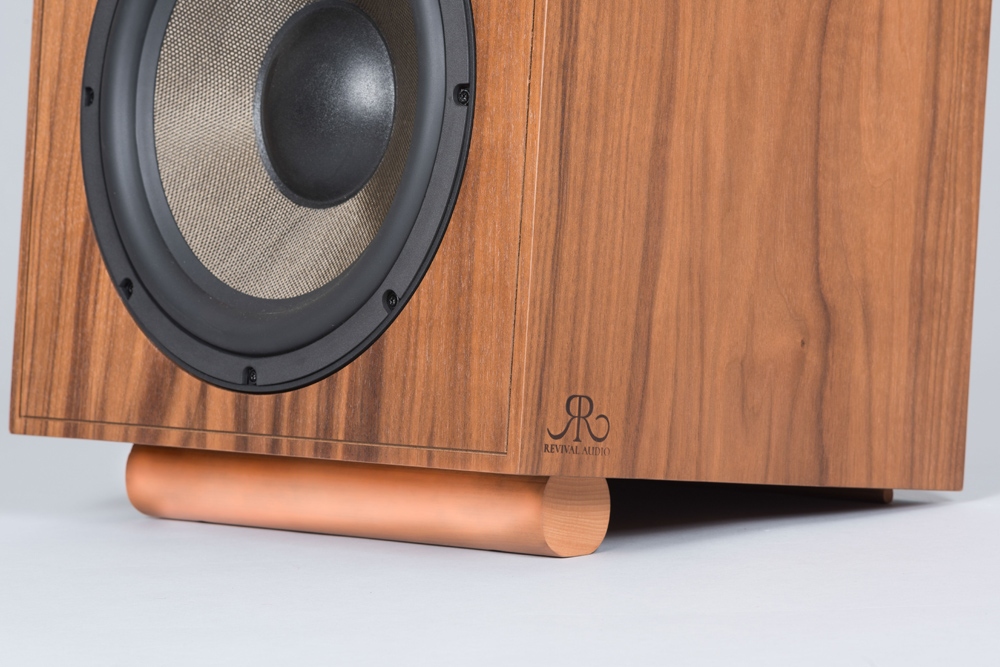
The A5s come with a large wooden dowel that attaches to the bottom of the cabinet at the front, allowing the speakers to sit on the floor in an upward-facing position in relation to the listener. This looked odd to me, so I opted to sit them on the accompanying Revival Audio iron stands (optional at an extra AU$750). With the speakers being 710mm high, the stands added a further 425mm, making them the ideal height for my listening position.
With Revival Audio being a new brand and not being familiar with its products, I read-up on the company’s website regarding its backstory, driver technology and design concepts and was looking forward to the A5’s first listen. After playing a few hours of low-level background music to let the system warm up, I initially found the sound to be a little heavy, with the tweeter and midrange sounding detailed but a little lacking in life and although the bass was tight, I was wanting more punch and energy.
Considering the brands name, I assumed they were designed for a full-bodied/warmer sound without the distortion/colouration levels of speakers from generations ago. While there was some appeal to what I was hearing, it wasn’t correlating to what the company’s website described – until I started to notice slight changes over the first couple of weeks of play. It became apparent that the speakers were still running-in and had not yet reached their full potential.
In time, the tweeter and midrange formed a greater bond and became more open/revealing. Lastly, the bass became more energetic while remaining tight and fast, completing the equilibrium between the three drivers.
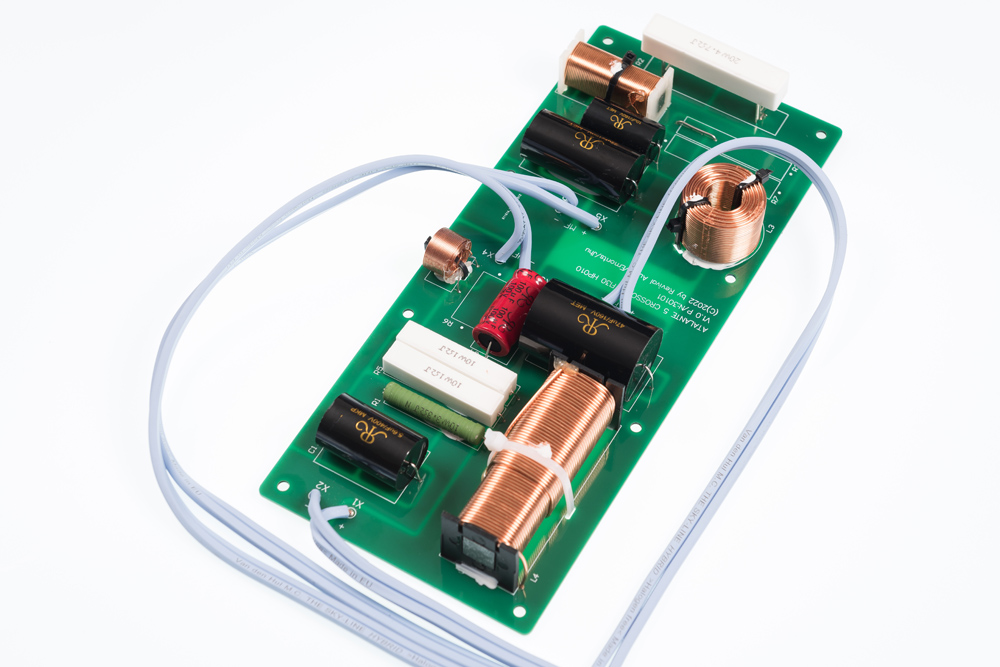
It was during the preliminary stages of play that I experimented with the port bungs being left in or taken out and found no discernible difference. Thinking their purpose would be for tuning the bass response when the speakers were positioned near walls. Once the speakers had been run-in, I found a different result. Removing the bungs, provided marginally better PRaT while vocals were a little freer with better flow and presence and bass notes had better extension when called upon. Keeping the bungs out became my preference and a revision of my listening sessions and notes were undertaken.
Listening Course
Angus & Julia Stone’s “Draw your swords” from the album Down the way is my most played track ever, according to Roon. As the opening acoustic guitar lightly strums along, the piano notes softly float above the speakers and linger longer than I have heard before, drawing you further into the song as the piano starts to wrap around you, creating a heavenly atmosphere and a huge soundstage. As Angus’ vocals come in, he sings in a slight whisper, adding breath to the lyrics. Here the A5s’ midrange has just enough body to keep this from sounding too light and airy. The imagery becomes dimensional as Julia’s backing vocals are introduced and the song builds in pace and scale. After the acoustic guitars change in key, there is what I call, a drop-out bass note. This note tends to be lightly applied with a subtle and noticeably short extension, as is the case with my own current speakers. For me, having greater presence and extension of this bass note adds mood to a track and great character to a speaker.
I have got to say, I was a little excited and surprised as to what the A5s gave me. This note had good weight and depth that seemed to just emanate from the bottom of the speaker and roll across the floor with good extension. Understandably, this is a personal preference, and some may find this type of bass a tad loose, and although kick drums remain tight, bass guitar notes can be drawn out a little. Applying the port bungs will tighten this effect, especially if the speakers are close to the back or corner walls.
Following along to the track’s kick drum, you get a sense of the skin being delicately struck by the pedal, immediately followed by the deep bass guitar that establishes the bassline of the song, with the two being clearly distinguishable by the low-level detail these speakers display. As Angus’ voice grows in angst, his growl is recognised with great tone, while crashing symbols shimmer across the higher planes of the soundstage without ever seeping into anything else. The A5s’ balance and control in staging is impressive, to say the least, and they preserve this focus during the track’s dynamic ending.
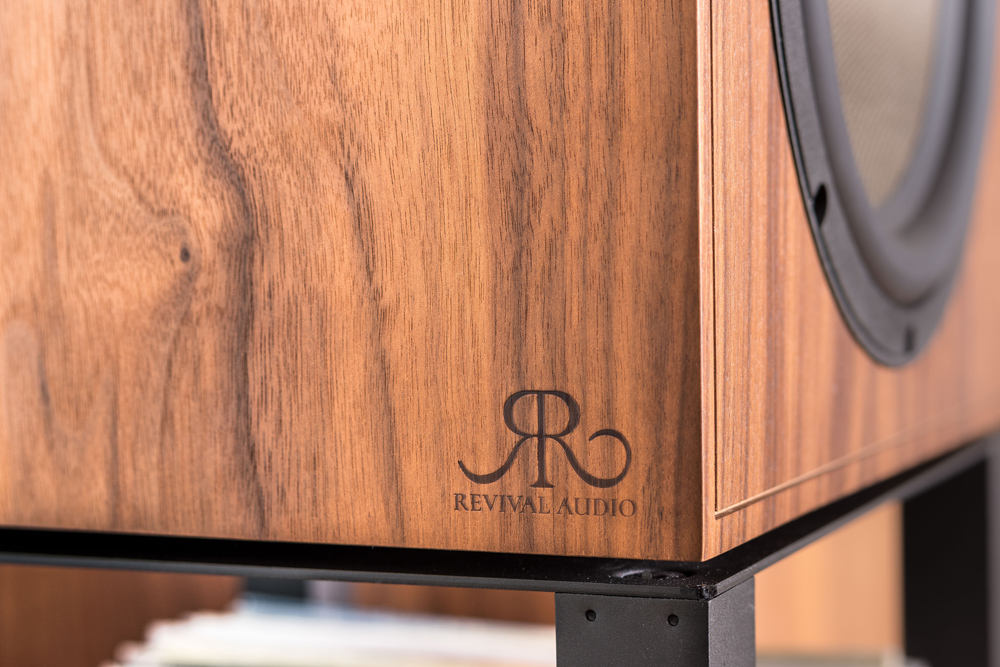
Upon hearing this track so many times and on many different systems, I can honestly say the A5s presented a freshness to the song. I am starting to realise the brand’s name, Revival Audio, is not just about the speakers’ aesthetics.
“Good to be Alone” by Matt Corby on his Telluric album is a close mic recording, giving you the perception of being in the front row to the artist in a small venue. The clean electric guitar notes played by Corby are tonally rich with colourful textures, offering inner details of his fingers plucking and bending the strings. The fundamental notes strike out with attack, immediately followed by the beautiful harmonics that effortlessly resonate with natural extension then fade into silence. His voice is dead centre and clear, giving me a greater connection to the lyrics with better diction than I remember. The presence and precision the A5s provide is truly mesmerising which adds to the realism of the performance.
Revival Audio believes that sound is an art, and these speakers truly paint a portrait of Corby sitting on a chair with his guitar snug against his body, resting on his lap while his vocals are placed just above, giving the impression he is slightly crouched forward while playing the guitar.
The Dave Mathews Band’s song “#41” from their Crash album is a great demo track. It’s a busy song with a big band sound and yet the A5s manage to keep everything in its place, particularly the vocals which always remains in front of the group. The contrast between the crisp high hats to the solid and tight kick drum sets the pace nicely while the complexity of the various additional instruments has no bearing on the fluency or clarity of the tempo. You can really hear and appreciate how united the production is, as each musician’s position is better defined having their own space within the music with greater control and focus on the separation than I have heard before. It feels like an exhilarating rhythmic ride, without any confusion, while noting inner cues of the numerous sounds within the track.
After playing tunes I knew would highlight the strengths of the A5s, I thought I should add some diversity to the line-up for a more rounded view, as it’s often considered that well recorded/audiophile music will make any system sound good and indeed such tracks were very impressive, especially 24-bit tracks, but the true asset of the A5 speakers is that you don’t need to restrict yourself to this genre to enjoy the most out of them.
Listening to the track “Desert Flower” from the Finnish band Auri on the self-titled debut album, I was entranced by the sweetness of the violin solo as it just floated in mid-air between the speakers. There was also a greater presence of the subtle background beat which did not require higher volumes to be heard.
I was impressed with the levels of depth the A5s reached on the track “Late November” when switching to the electronica band Beacon on their album The Ways We Separate. It’s a short and simple tune that demonstrated the might and control the 12-inch BSC woofers can produce with various bass notes.
Turning the volume up, I was astounded at the sheer power and energy the speakers exerted while playing the track “Generali” on the album Drum & Piano Project by the Hungarian pianist and composer Havasi. The forceful whack on the snare drum reverberated through as the equally firm strikes of the kick drum added depth against the speed of the drum rolls, as Havasi increases the pace and weight on the piano keys, driving the melody. Wow, this had me in a grip of contentment and was the perfect climax to my listening sessions.
After enjoying so much music from all genres over the last few weeks, I found a recurring theme to the Atalante 5 speakers. There is a cleanliness to the music without the polish. What I mean here is there are none of the usual suspects of glare, edginess, sharpness, or fatigue that can be unwanted associates of transparency and detail. And it is noticeable across the entire frequency range, yet it does not wash away any of the richness, body, or depth either, providing a large palette of tones and textures that does not add colouration. I’m finding it hard to articulate it but it’s like adding a power filter to the speakers, giving you a blacker background that enables all the music to just flow from the drivers organically without noticeable constraints or frequency variations.

Don’t get me wrong, I’m not claiming that everything played on the A5s sounded brilliant, or that badly recorded albums were magically corrected of their flaws. What I can confirm is that while playing lesser quality recordings, their imperfections are less obtrusive. Albums that can be harsh, for example, are a little less so due to the balance the A5s portray – a hot treble does not get its own spotlight. Tracks that are a little congested, tended to be more open with better separation. Voices that are recessed or have an aura effect around them are a little clearer with better focus and position within the soundstage. I could go on, but hopefully you get what I’m saying here.
I attribute all of this to the unique and patented technologies developed by Emonts and his modernisation in driver designs and engineering, along with his mission to eliminate resonances. Emonts is also aiming at producing some of the best drivers in the world. For me, this is where Revival Audio’s promise of the “Next level listening experience” is truly evident.
Conclusion – Final course
The Atalante 5 speakers completely involve you by synchronously interlacing rich details, impeccable imaging, sonic purity and musicality. They give you a closer relationship to your music that is insightful while still being enjoyable, engaging yet relaxing, and yes, depending on your mood or mindset, you really can choose how you wish to interact with them – they will satisfy your specific cravings.
Although I do not listen to classical music at home, I am often open to hearing some great pieces played by friends and audio club members, so I can appreciate how well such tracks would sound on the Atalante 5s, in terms of their ability to manage complex music with separation, scalability, depth and dynamics.
Throughout all my critical listening sessions, I often found myself drifting away from reviewer mode and just flowing and tapping along to the music. Is this not the sole purpose of any great sounding system?
Revival Audio can be truly proud of its achievement in producing a speaker of true high fidelity with quality design and workmanship without the need of a ridiculously large R&D budget nor gaudy design that would inflate cost.
If you are in the market for a new pair of speakers and have an appetite for the finer things in sound with a nod to nostalgic looks, the Atalante 5 speakers will nourish your ears and trigger your musical senses to greater heights. You’ll be as astonished, as I was, at how good these speakers sound, especially at their price.
It is my belief that Revival Audio have created the perfect recipe for success and I look forward to sampling everything that is added to the menu.
Bonne écoute!
… Steven JM Polley
Associated Equipment
- Speakers – Hulgich Audio Ella MkII, B&W 801 S2 Matrix w/North Creek Xovers, KEF LS50, LSX II
- Amplifier – Nord One SE NC500 monoblocks with Sonic Imagery buffer
- Preamplifier – Denafrips Athena
- Source – Antipodes DX2 running Roon, Oppo 105
- DAC – Chord QBD76
- Cables – Synergistic Research Apex speaker cable, Vertere Pulse-B XLR, Analysis Plus Digital, Crystal Cable AES/EBU cable, Power Oval 2 and Power Oval 10 power cords, IsoTek EVO3 Optimum power cord
- Room Treatment – Vicoustic Flexi Wood Ultra and Flexi A50 panels
- Power Conditioner - IsoTek EVO3 Sigmas powerline cleaner
- Miscellaneous – IsoAcoustics Gaia II feet, Basalt speaker blocks
Revival Audio Atalante 5 Loudspeakers
Price: AU$8000 (stands AU$750)
Australian Warranty: 10 Years
Australian Distributor: Audio Marketing
+61 2 9882 3877
www.audiomarketing.com.au
Revival Audio
Rue de la Chapelle
Obernai, Alsace
France
+33 0745311301
www.revivalaudio.fr






